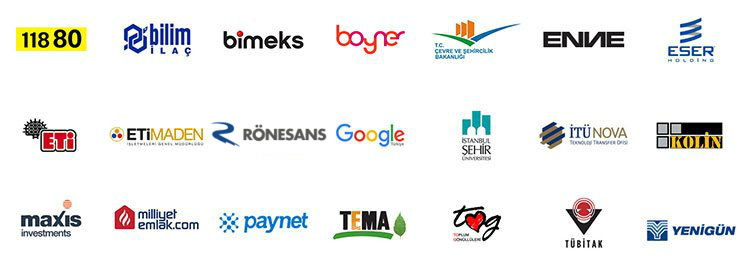
Over the last few years, the business world has been going through an unprecedented storm of change and uncertainty.
Geopolitical tensions, immediate supply chain disruptions, increasing cybersecurity threats, and increasing consumer pressure for sustainability have rewritten the rules of the game.
In this new and complex world, purchasing departments can no longer be a back-office function that simply cuts costs.
Purchasing has become one of the most strategic strongholds of the organization, a nerve center that manages risks, drives innovation and ensures the company's overall resilience.
Continuing with the old ways is no longer an option; understanding and proactively embracing the trends shaping the future will make the difference between survival and leadership.
This guide provides a roadmap to prepare your organization for the future by delving into seven critical trends that will shape the world of procurement in 2025 and beyond.
Traditional Procurement Has Hit a Wall: Why the Old Rules Are Outdated
The traditional purchasing mindset was largely based on the assumption of a predictable and stable world.
The main goal was to reduce unit costs through aggressive bargaining and manage suppliers as commodity providers.
But in today's VUCA (Volatile, Uncertain, Complex, Ambiguous) world, this approach has failed.
Focusing solely on cost can lead you to ignore hidden supply chain risks, such as over-reliance on a single geography or supplier.
Manual and slow processes leave you incapable of responding to sudden changes in the market.
Failing to address issues such as sustainability and ethics can cause irreparable damage to your brand reputation and customer loyalty.
In short, purchasing rules that worked until yesterday may sink your ship in the stormy seas of today and tomorrow.
The Cost of Resisting Change: Risk, Inefficiency, and Competitive Falling Behind
Ignoring this new reality and clinging to old habits will cost businesses dearly.
The bill is not just missed savings opportunities, but also increased operational risks, reduced efficiency and lost market share.
Studies by the consultancy firm McKinsey reveal how wide the performance gap has become between procurement organizations that are mature in terms of digitalization and strategic capabilities and those that are lagging behind.
According to a report by McKinsey , leading companies that embrace digital capabilities in procurement have maturity scores that are 40% higher than average performers, which directly translates to profitability.
This proves that companies that do not embrace digitalization and new trends not only operate less efficiently, but also experience a tangible financial disadvantage, lagging behind their competitors.
To resist change is to accept being gradually pushed out of the market.
Adapting to the Future: Purchasing Trends for 2025
The best defense against the uncertainties of the future is to adapt proactively. Here are seven key trends that will redefine the procurement function in 2025 and beyond:
1. Gaining Superpowers with Generative AI
Artificial intelligence is no longer a science fiction concept, but an operational reality of purchasing. Generative AI, in particular, is changing the rules of the game.
How will generative AI impact purchasing?
This technology acts as a “co-pilot” that allows procurement professionals to focus on more strategic tasks. It can analyze complex contracts in seconds and flag risky items, draft supplier communications based on market data, and even prepare tender (RFP) documents. This speeds up processes, reduces human error, and improves the quality of decision-making.
2. Building Sustainable and Ethical Supply Chains
Environmental, Social and Governance (ESG) criteria are no longer a nice-to-have, but a core business imperative. Consumers, investors and regulators are holding companies accountable across their entire supply chains.
Why is sustainable purchasing important?
Sustainability is critical to brand reputation and risk management. In 2025, procurement will play a central role in things like tracking suppliers’ carbon footprints, ensuring fair working conditions and embracing circular economy principles. This will not only protect the planet, but also make your company more resilient to future regulations and market demands.
3. Radical Transparency and Advanced Data Analytics
Data is the new oil, and procurement departments are sitting on top of this resource. Turning raw data (spend information, supplier performance, etc.) into actionable insights will be one of their key competitive advantages.
What is the role of data analytics in procurement?
Advanced analytics tools enable buyers to detect spend anomalies, predict demand fluctuations, and proactively identify supplier risks. This enables a shift from “gut” decision making to “data-driven” strategic decision making.
4. Geopolitical Risk Management and Supply Chain Resilience
The dangers of being dependent on a single resource or geography have been learned the hard way in recent years. The "just-in-time" philosophy is giving way to the "just-in-case" approach.
How to increase supply chain resilience?
In 2025, leading purchasing organizations will actively diversify their supplier bases, develop regional or local sourcing (near-shoring) for key products, and use technologies such as digital twins to simulate potential disruptions. The goal is to build a supply chain that can quickly recover from shocks, not one that can withstand them.
5. Transition from Supplier Relationships to Supplier Ecosystems
Traditional, one-on-one supplier relationship management (SRM) is giving way to the management of more dynamic and collaborative “supplier ecosystems.”
What does supplier ecosystem mean?
This means networking not just with large strategic suppliers, but also with startups, universities, and even competitors to innovate and create value. The aim is to bring the best ideas and talent from outside the company inward, working towards a common goal.
6. The Rise of Procurement-as-a-Service (PaaS) Models
Not every company has the resources or expertise to build a world-class procurement department. PaaS models give companies access to the best procurement technologies, processes, and talent through outsourcing. This is a democratizing trend that allows SMBs, in particular, to compete with larger companies.
7. Talent Development: Emphasizing Analytical and Social Skills
As the procurement function is transformed by technology, the skill sets required are also changing. Aggressive negotiation skills are giving way to more strategic competencies such as data analysis, technology management, relationship building and storytelling. The successful procurement professional of 2025 must be a data scientist, a diplomat and a strategist.
Ignoring Trends: Mistakes Leaders Should Avoid
Understanding these trends is not enough; action is required.
The most common mistake leaders make is to delay technology adoption, experiencing “analysis paralysis.”
While we wait for the perfect solution, competitors make progress, even with simpler tools.
Another mistake is to invest only in technology and neglect the training and talent development of the teams that will use this technology.
Finally, postponing long-term and strategic issues such as sustainability due to short-term cost pressures is a shortsightedness that could lead to much greater costs in the future.
The New Role of the Procurement Leader: Strategist, Technologist and Change Leader
All of these trends are redefining the role of the Chief Procurement Officer (CPO).
The CPO is no longer just an operational manager, but also a leader who sits on the company's board of directors, shaping corporate strategy.
This new role requires being a “technologist” who understands technology, a “strategist” who makes sense of data, and a “change leader” who moves the organization into the future.
The CPO of the future will manage not only costs but also risk, innovation and brand reputation.
Conclusion: Future Procurement is Proactive, Smart and Value-Driven
Purchasing trends for 2025 and beyond are not isolated issues.
These are an interconnected network that feeds off each other and creates a new identity for the purchasing function.
Artificial intelligence makes sense of data, data makes sustainability goals measurable, and sustainability requires collaboration with supplier ecosystems.
Organizations that are prepared for this future will see uncertainties not as risks but as opportunities to differentiate themselves from their competitors.
The purchasing of the future will be proactive rather than reactive, intelligent rather than instinctive, and holistically value-driven rather than solely cost-driven.






